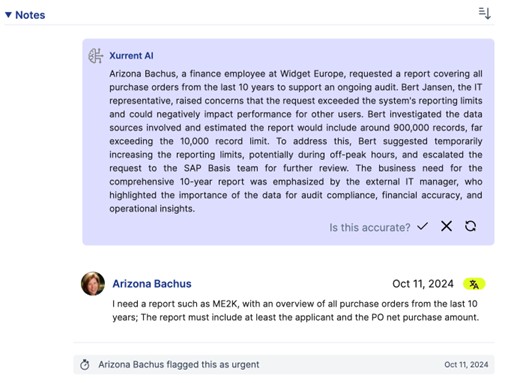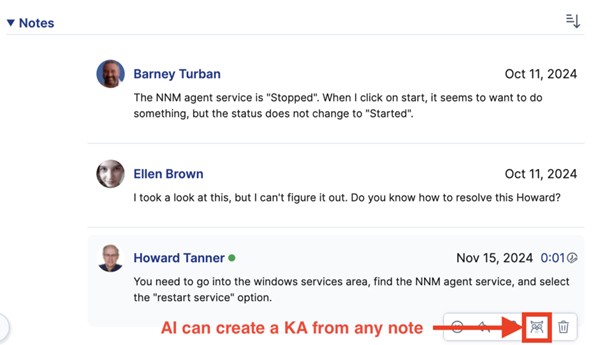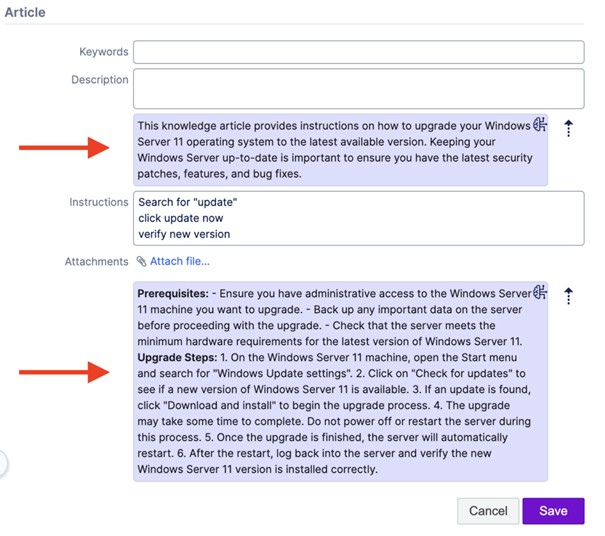Overview of Xurrent’s AI Features
The Xurrent platform is an enterprise service management platform that aligns human resources, devices, finances, marketing, and IT, supporting unified, scalable operations for business growth. Xurrent has strategically decided to invest in secure artificial intelligence within ITSM, ESM, and ITOM to boost productivity and efficiency. Moreover, the platform continues to meet security standards alongside these advancements.
The use of artificial intelligence is a natural evolution of the services Xurrent provides. As the company shares in its blog, the Xurrent platform utilizes generative AI models, all hosted on AWS Bedrock, in a way that aligns seamlessly with the delivery of the rest of their technological stack.
Privacy, transparency, and security are, of course, top priorities. From Amazon Bedrock documentation: “Amazon Bedrock does not store or log your data to train AWS models, nor does it distribute your data to third parties.”
Examples of AI Use in ITSM and ESM:
AI Summarization of Requests
Generative artificial intelligence is ideal for reading and summarizing large amounts of content. All requests can be automatically summarized in Xurrent. On average, more than 2,000 request summaries are created per customer weekly. This translates to a significant increase in productivity.
(Summary in the image – see the purple section below):

Feedback on Summarization Using AI
Instant feedback on request summarization using AI can be provided by answering the question “Is this accurate?” You select ✓ or x and open a new dialog box to specify your feedback. This allows the Xurrent AI team to continuously improve this functionality.
AI Summary for Next Steps in “Waiting for Customer” Status
If a request is “stuck” in the “Waiting for Customer” state for a certain period—without a response from the requester—the system can trigger AI to add a short summary of the request and specify what action or information is required from the requester.
Creation and Improvement of Knowledge Articles Using AI
Resolving a request or issue is often not written in a single knowledge article or note. Xurrent’s generative AI helps in creating new knowledge articles (KAs) or updating (improving) existing articles to enhance their effectiveness based on all the notes from that record. It can suggest the subject, description, and instructions for the required knowledge database article.

AI also provides all relevant details after adding a basic level of information to the KA, saving valuable time and ensuring that the content in the KA is as accurate as possible.

With Xurrent AI, anyone can create detailed and accurate KAs. Of course, the accuracy, completeness, and appropriateness should be checked before saving.

Automatic AI Classification
One of the significant challenges in all ITSM solutions is the correct categorization of requests. In many organizations, more than 20% of requests are uncategorized, leading to longer response and resolution times. Xurrent AI automatically categorizes all requests and provides reasoning for the selected category, which can be fine-tuned over time to make it more accurate.
AI Support in Automation
Xurrent AI automatically creates a new automation based on a prompt. Simply describe in words how the automation should work, and Xurrent will automatically create it. This can save 5-30 minutes on automation creation, contributing to a massive increase in productivity throughout the use of Xurrent.


Automatic AI Translation
This feature allows every user or end customer to work in their preferred language. Our multilingual AI-powered translation tool works in the background and instantly translates requests, comments, and more into the preferred language of each team member or requester, enabling seamless communication and collaboration across regions.
Currently, Xurrent’s automatic translation supports over 57 languages.
Final Note: This article was not created by AI 😊 However, it is possible that it will become outdated in the near future due to the constant development of the AI environment.